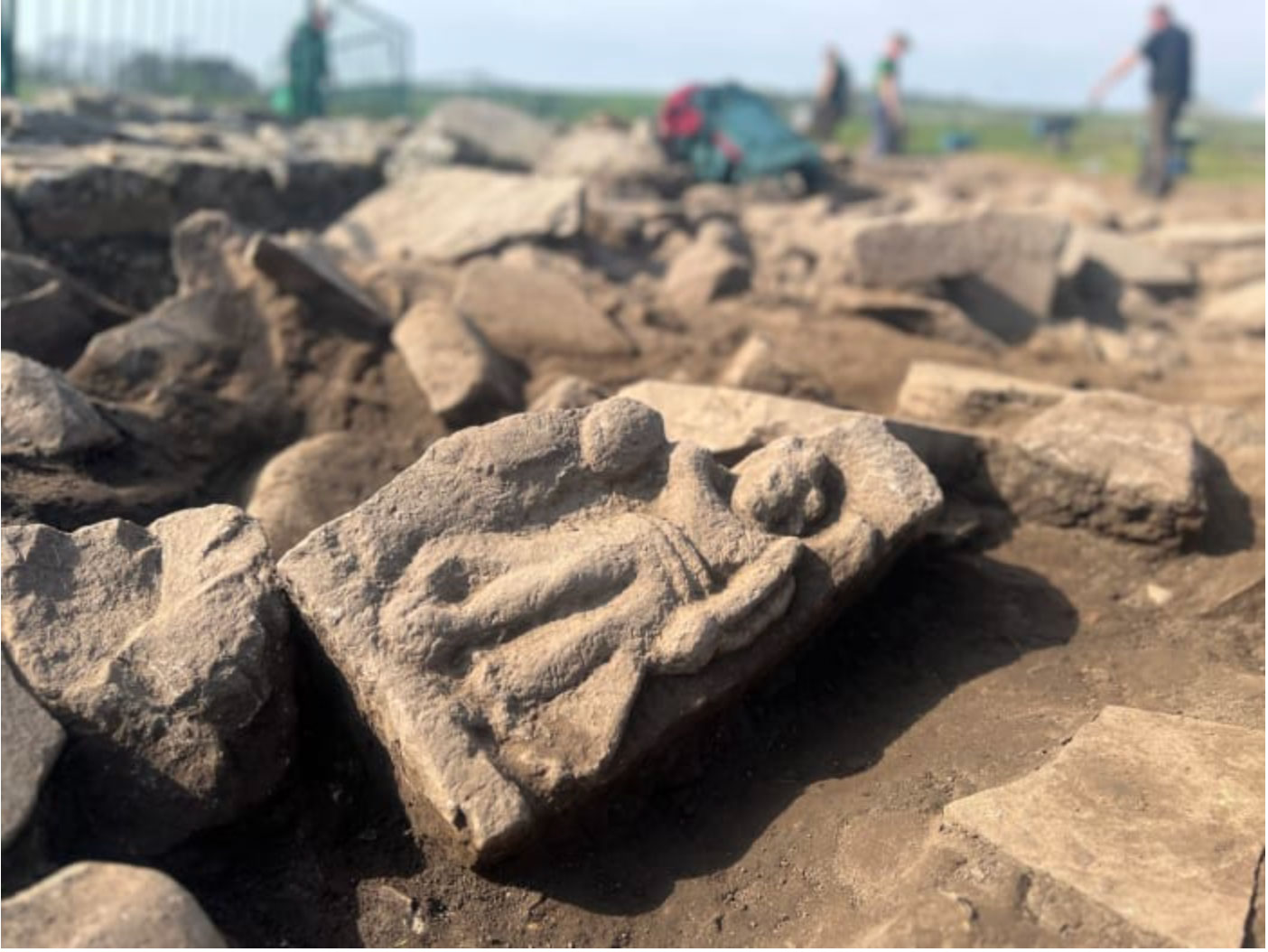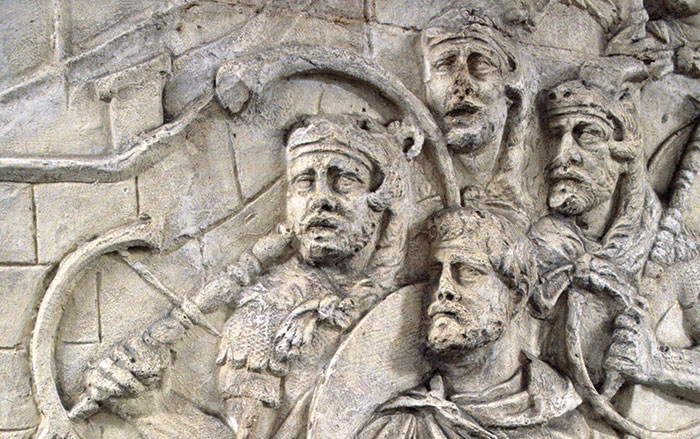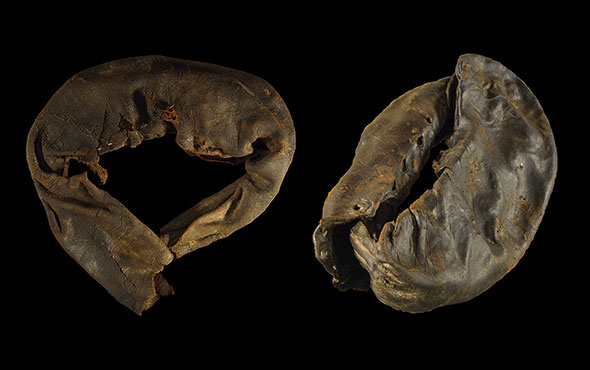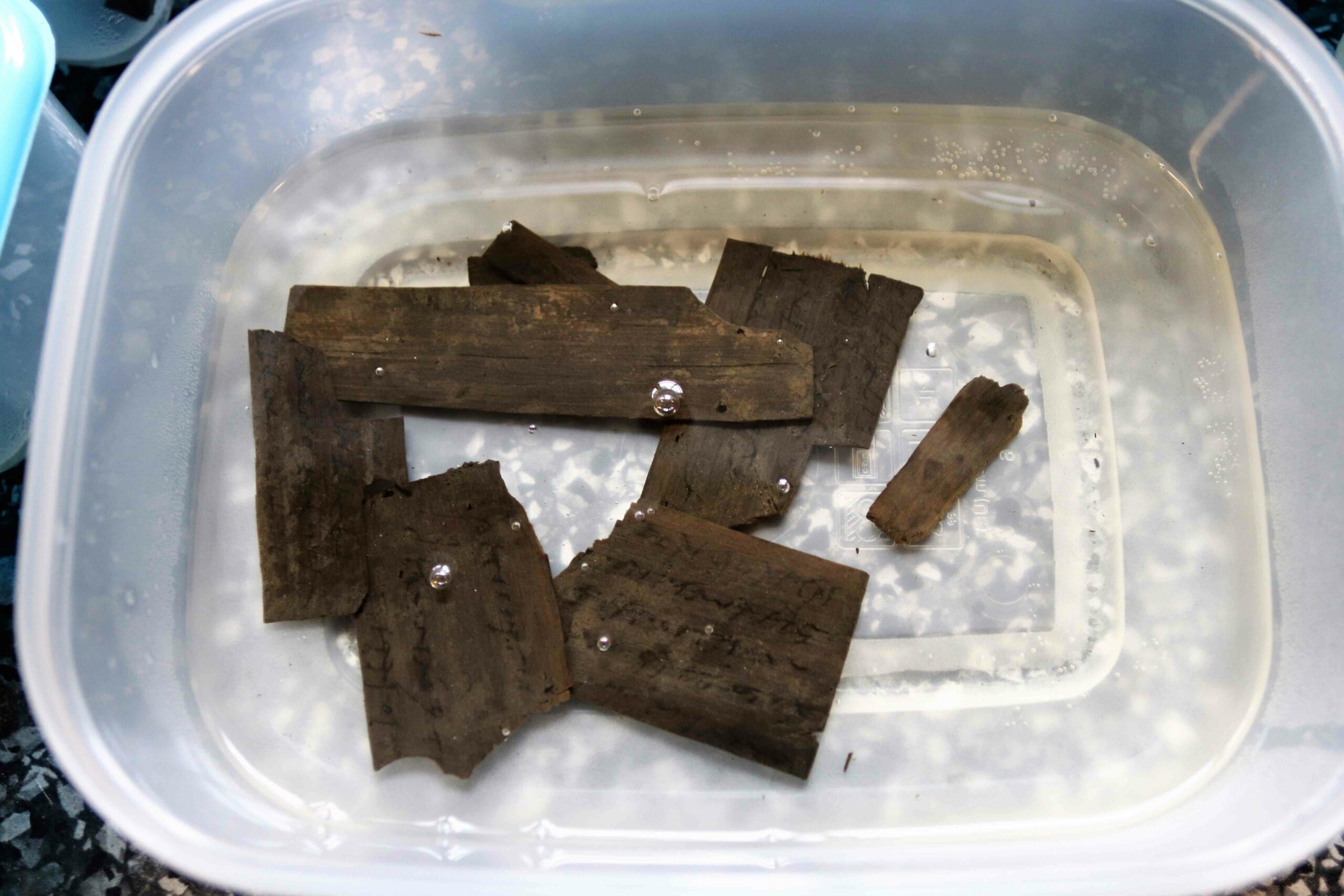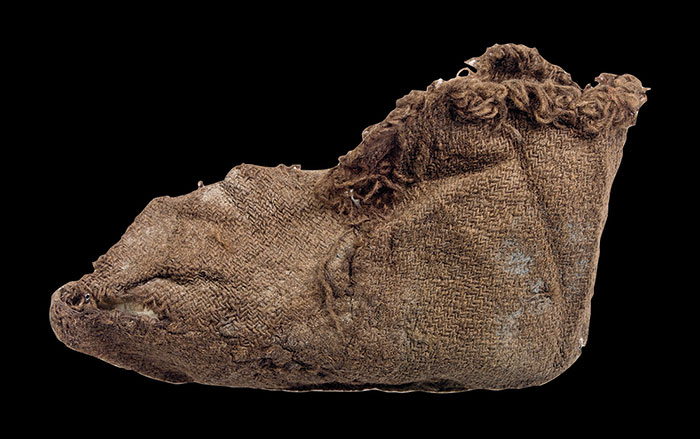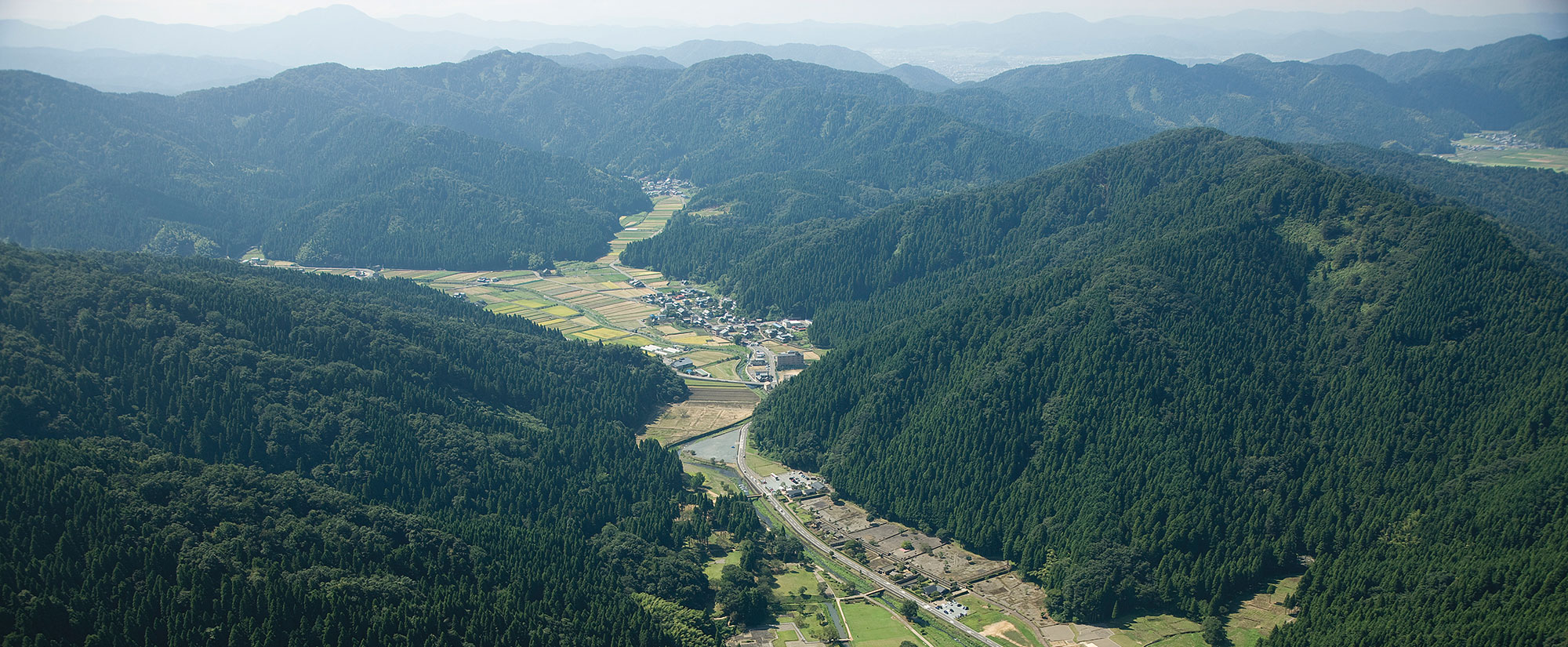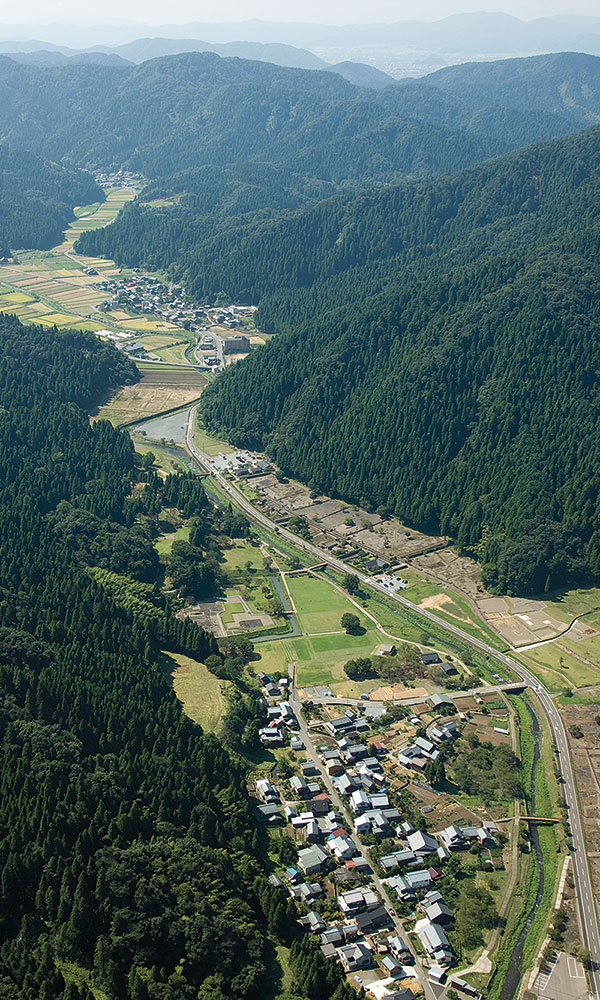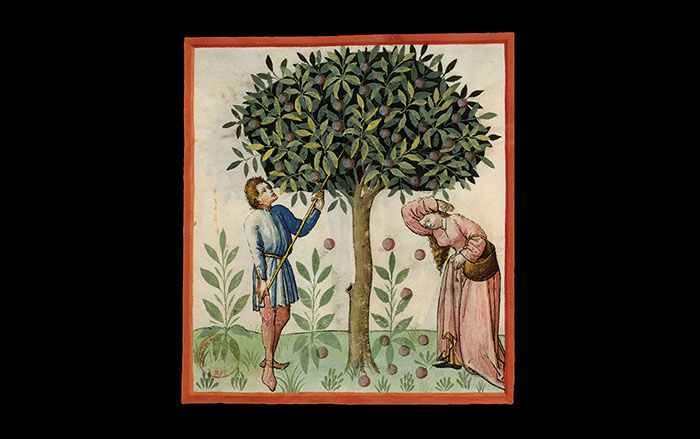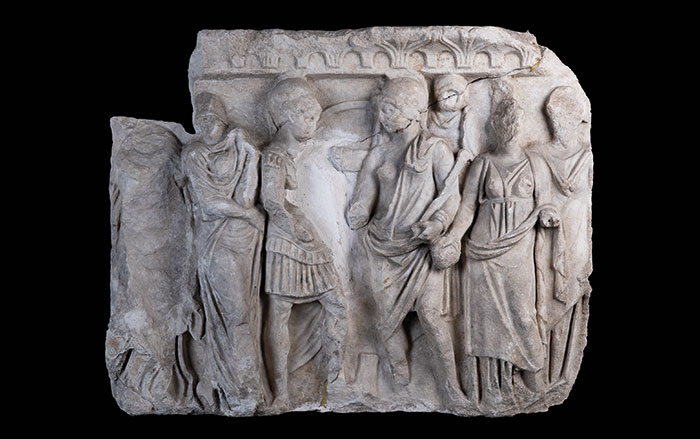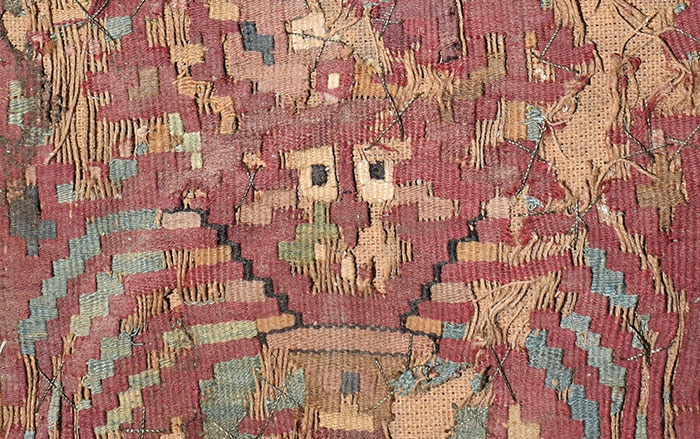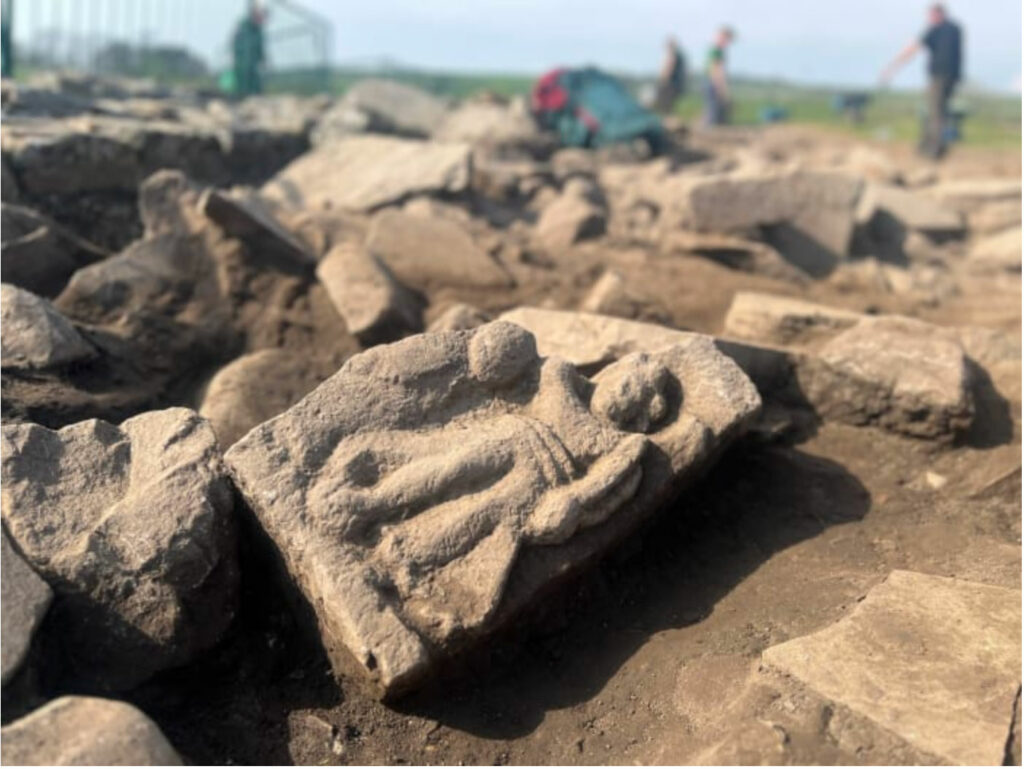
VINDOLANDA, ENGLAND—A sandstone relief believed to represent Victoria, the Roman goddess of Victory, was unearthed from the Vindolanda fort near Hadrian’s Wall in northern England, according to a statement released by the Vindolanda Trust. The deity was highly esteemed in Roman society, especially among soldiers, and was often honored after military success on the battlefield. The foot-and-a-half-tall sculpture was found in the rubble above a military barracks at the site, where as many as 800 Roman auxiliary troops were stationed. Archaeologists believe that it may have been part of an ornamental arch or gate that once adorned the building. The barracks and the relief likely date to the early third century a.d., a tumultuous time in Britain when Roman troops clashed with rebellious native tribes north of the wall in a conflict known as the Severan wars. The commission of a monument featuring the Victory goddess likely symbolized the end of that conflict and the building of new military infrastructure at Vindolanda. “Finds like this are increasingly rare these days from Roman Britain, but the beautifully carved figure vividly reminds us that Roman forts were not simply utilitarian, they had grandeur and of course the symbolism was a vital part of the culture here for the soldiers almost 2,000 years ago,” said archaeologist Andrew Birley. For more about discoveries at Vindolanda, go to "The Wall at the End of the Empire: Life on the Frontier."


